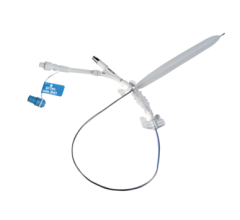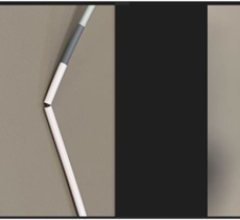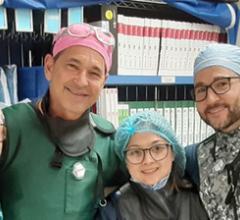
January 29, 2016 — Intact Vascular Inc. announced that positive six-month results from its Tack Optimized Balloon Angioplasty – Below-the-Knee (TOBA-BTK) clinical study were presented at the LINC 2016 conference by principal investigator Marianne Brodmann, M.D. Brodmann is head of the Clinical Division of Angiology at Medical University of Graz in Austria.
The TOBA-BTK study enrolled 35 subjects at six sites in Europe. All study subjects were suffering from critical limb ischemia, a form of peripheral arterial disease, in one or both legs. Of the subjects enrolled, 32 were treated with the 4 French Tack Endovascular System following standard balloon angioplasty in the tibial and peroneal arteries. The Tack Endovascular System is a new technology designed to repair dissections (or tears) in the artery wall that frequently occur as a complication of balloon angioplasty. The system allows physicians to repair these dissections while leaving a minimal amount of foreign material in the artery, reducing mechanical stress on the artery, and preserving future treatment options.
Some of the key conclusions from the TOBA-BTK study included:
- 87.1 percent six-month primary patency;
- 93.5 percent six-month assisted primary patency;
- 93.5 percent freedom from total lesion revascularization (TLR);
- 96.8 percent amputation-free survival;
- 100 percent freedom from death; and
- 100 percent freedom from major amputation.
Brodmann stated, “The clinical outcomes of the TOBA-BTK experience are very positive in a patient population that is challenging to treat with current therapies and consumes significant healthcare resources. This new approach to repairing arterial dissections below the knee demonstrates the benefit of minimizing vessel trauma and leaving minimal metal behind. The Tack supports the dissection and allows the vessel to heal, while preserving future treatment options for our patients.”
Patients in the study demonstrated a marked improvement, as measured by the Rutherford Classification System, a seven-stage scale ranging from no symptoms (class 0) to gangrene (class 6). The study data suggest that an increasing number of patients continue to improve, with a 70 percent reduction in patients with Rutherford class 5 disease at six months. This group of patients accounted for almost 90 percent of the patients studied. Most importantly, none of the patients have had a major amputation at six months.
Brodmann said, “This new approach of low radial force and spot treatment of dissections may be a perfect partner for use with drug-coated balloons in the treatment of BTK disease. I look forward to presenting the 12-month TOBA-BTK data in the near future.”
Based on these promising results, the company is pursuing an expanded study (TOBA II BTK) that will assess the performance of the Tack Endovascular System in a larger population and will include U.S. investigators.
For more information: www.intactvascular.com


 June 13, 2024
June 13, 2024 








